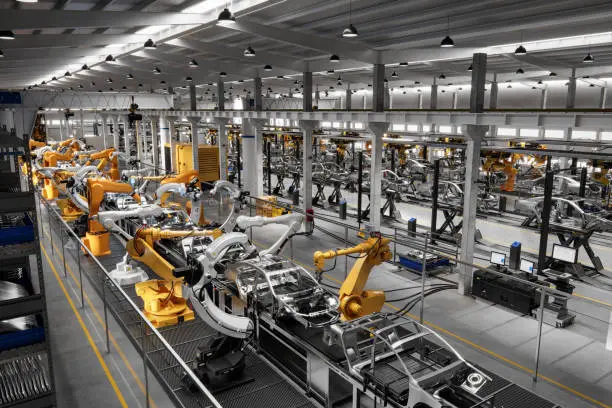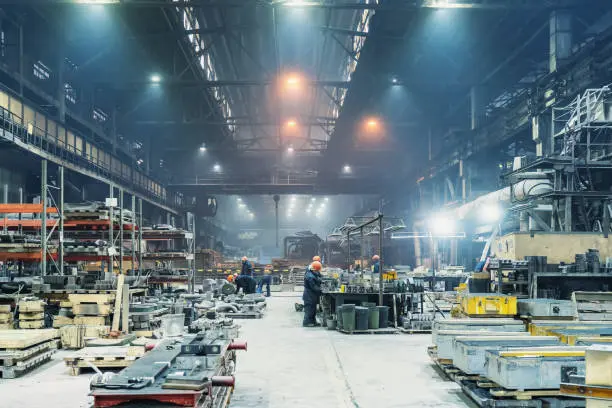
How to Build a Factory: A Step-by-Step Guide
- Admin
Building a factory is a major undertaking that requires careful planning, coordination, and execution. Whether you're setting up a small manufacturing plant or a large industrial facility, the process involves several key steps that cover everything from initial design to construction and operations. This guide will walk you through the critical stages of building a factory, helping you avoid common pitfalls and ensuring a successful project.
Step 1: Define Your Factory’s Purpose and Requirements
The first step in building a factory is to clearly define its purpose and what you aim to achieve. This involves understanding the type of products you’ll be manufacturing, the scale of production, and the specific needs of your industry.
Type of Manufacturing: Will your factory produce goods through assembly, fabrication, or processing? Knowing the nature of your production helps determine layout, equipment, and operational requirements.
Production Capacity: Determine the volume of products you expect to produce, as this will affect the size of the facility, equipment needed, and workflow design.
Special Requirements: Some factories may need specific environmental conditions (e.g., controlled temperature or humidity), specialized safety measures, or access to utilities like water, gas, or chemicals.
Step 2: Choose a Suitable Location
Location is critical to the success of your factory, as it affects logistics, access to resources, and overall operating costs.
Proximity to Suppliers and Customers: Choose a location that minimizes transportation costs for raw materials and finished goods. Being close to suppliers and major distribution routes can reduce expenses and lead times.
Access to Infrastructure: Ensure that the site has access to essential utilities such as electricity, water, gas, and telecommunications. Reliable infrastructure is essential for smooth operations.
Zoning and Environmental Regulations: Check local zoning laws to ensure that the land is approved for industrial use. Be aware of environmental regulations that may apply, such as emissions limits, waste disposal requirements, and noise restrictions.
Labor Availability: Consider the availability of skilled and unskilled labor in the area. Being in a location with a strong workforce is essential to running your factory efficiently.
Step 3: Develop a Factory Layout and Design
The layout and design of your factory should maximize efficiency, safety, and flexibility for future expansion. Work with architects, engineers, and industrial designers to create a detailed blueprint.
Flow of Production: The layout should promote a smooth flow of materials and products through the different stages of production. Position machinery and workstations in a way that minimizes handling and transportation within the facility.
Space Requirements: Allocate enough space for manufacturing, storage, administration, and employee facilities. Consider ceiling heights for machinery and vertical storage options.
Safety Considerations: Ensure that the design complies with local safety regulations. This includes fire exits, safe handling of hazardous materials, ventilation, and ergonomic working conditions for employees.
Future Expansion: Plan for potential growth. Include extra space or design features that allow for future expansion without disrupting current operations.
Step 4: Obtain Permits and Approvals
Before starting construction, you’ll need to obtain the necessary permits and approvals from local authorities.
Building Permits: These are required to ensure that the construction of your factory complies with local building codes and regulations. Your architect or contractor can help navigate this process.
Environmental Permits: Depending on the type of manufacturing, you may need environmental permits related to emissions, waste management, and water usage.
Operational Permits: Some industries require specific operational permits or licenses to produce certain goods, handle chemicals, or export products.
Health and Safety Approvals: Ensure that your factory design meets local occupational health and safety standards before construction begins.
Step 5: Hire Contractors and Begin Construction
Once all permits are secured, the next step is hiring contractors and beginning construction.
General Contractor: Hire a reputable general contractor with experience in industrial construction. They will manage the construction process, including coordinating with subcontractors for specific tasks such as electrical work, plumbing, and HVAC installation.
Project Management: Assign a project manager to oversee the timeline, budget, and quality control. Regular communication with the construction team is essential to ensure that the project stays on track and within budget.
Foundation and Structure: The foundation must be designed to support heavy machinery, while the building structure should accommodate the equipment, storage, and movement of materials. Consider using steel framing for durability and flexibility.
Utility Installation: Utilities like power, water, gas, and sewage systems need to be installed during the construction process. Ensure that these are capable of supporting the factory’s operational needs.
Step 6: Install Machinery and Equipment
Once the building is complete, the next step is to install the machinery, equipment, and production lines. This stage requires careful planning to ensure that everything is set up for optimal efficiency.
Equipment Placement: Follow the factory layout plan to install machinery in a way that supports the production flow. Ensure that machines are placed securely and with enough space for maintenance and repairs.
Utility Connections: Connect machinery to utilities like electricity, gas, and compressed air. It’s important that these connections are properly rated to handle the operational loads of the equipment.
Safety Inspections: Before starting production, have all machinery and equipment inspected to ensure they meet safety standards. Install safety guards, emergency stop buttons, and proper signage around machinery.
Step 7: Hire and Train Employees
Your factory needs a skilled workforce to operate efficiently. Start by recruiting the right personnel for key positions, including managers, engineers, and production workers.
Recruitment: Hire employees with the necessary technical skills and experience for your specific type of manufacturing. Consider the need for shift work, especially in factories that operate around the clock.
Employee Training: Train your employees on the safe and efficient operation of machinery and equipment. Provide safety training, including emergency procedures and handling hazardous materials if applicable.
Step 8: Test Operations and Quality Control
Before full-scale production begins, it’s crucial to test the machinery, production lines, and quality control systems.
Trial Runs: Perform trial runs of the production process to identify any potential issues with machinery, workflow, or product quality. This allows you to make adjustments before scaling up production.
Quality Control Systems: Implement quality control checks at various stages of production to ensure that products meet industry standards. Set up inspection points and monitoring systems to maintain consistent quality.
Maintenance Plan: Develop a maintenance schedule for your machinery to prevent breakdowns and ensure smooth operations.
Step 9: Start Production
After successfully completing testing and addressing any issues, you can begin full-scale production. Ensure that your supply chain is ready to deliver raw materials, and that logistics are in place to distribute finished goods.
Monitor Operations: Continuously monitor production efficiency, quality control, and worker safety. Use key performance indicators (KPIs) to track productivity, waste, and downtime.
Continuous Improvement: Regularly evaluate processes and look for ways to improve efficiency, reduce waste, and optimize production.
Conclusion
Building a factory is a complex but rewarding process that requires careful planning, detailed design, and skilled execution. By following these steps, you can ensure a successful project from initial concept to full-scale production. With the right location, layout, equipment, and workforce in place, your factory will be positioned for long-term success.
